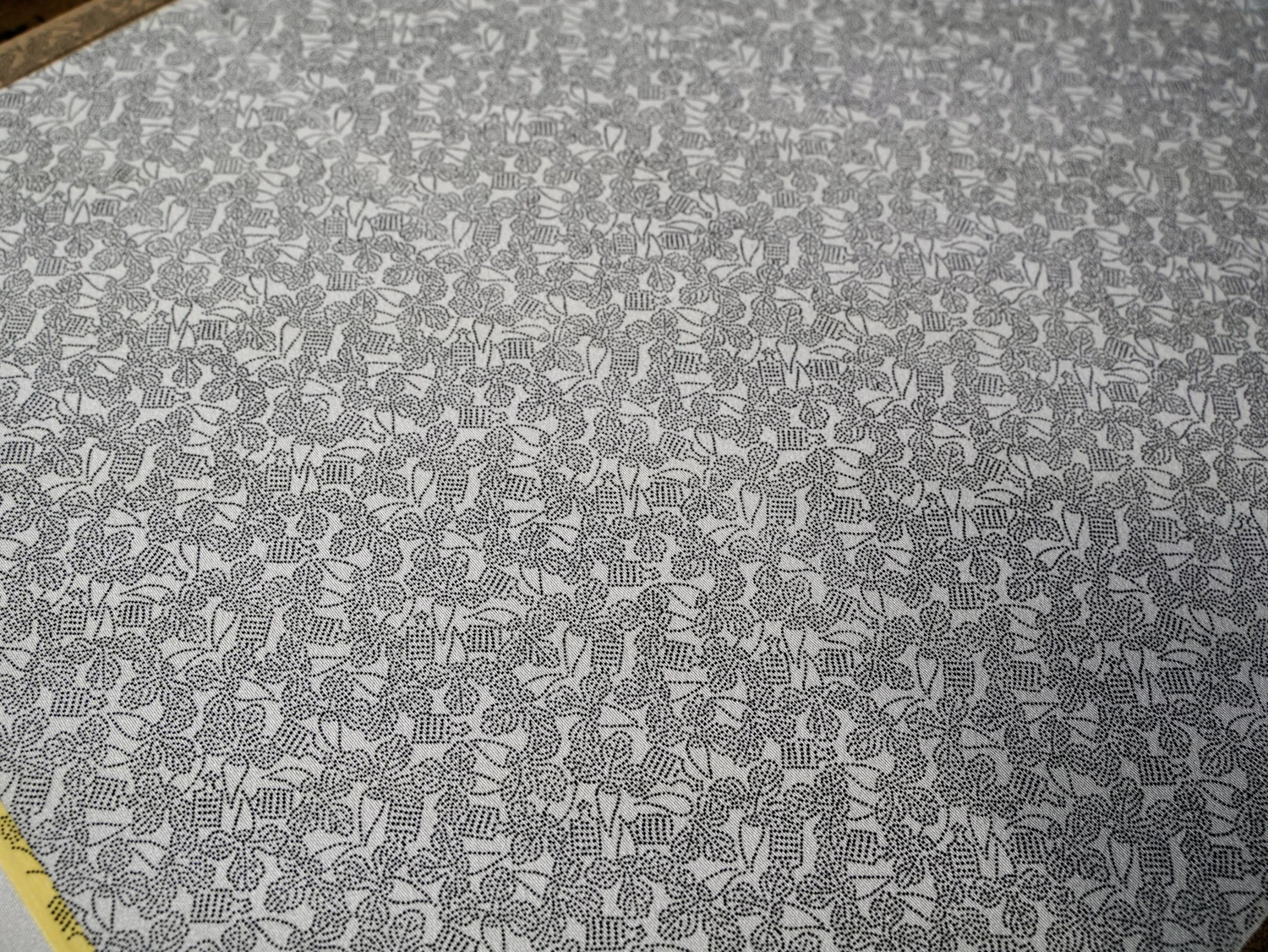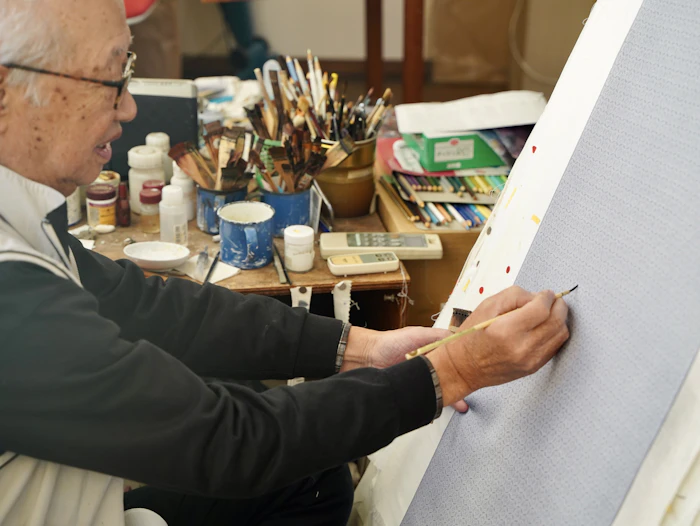

The fifth-generation head of Ishizuka Senko Limited.
The Splendor of Continuing Traditional Crafts
Could you tell us about the establishment of Ishizuka Senko?
Ishizuka Senko was founded by the first-generation head, Umejiro Ishizuka, as a dyeing business in Odawara around 1890. Until the second-generation head Kinjiro, the company didn't focus on Edo Komon, but rather produced vibrant, luxurious kimono with large patterns.
Later, we moved our base to its current location in Hachioji, where during the tenure of my grandfather, Kenkichi, who was the third head, the demand for simpler kimonos increased, leading to the procurement and production of Edo Komon's pattern paper. However, as Edo Komon's patterns' size and intricacy vary, my grandfather's generation didn't manufacture those with the extremely fine patterns referred to as 'goku' (極, meaning 'extreme').
Subsequently, my father, the fourth-generation head Yukio, started making 'goku' sharks and stripes, and I have since taken over as the fifth head.
So, you started making Edo Komon halfway through?
Indeed. Even though the foundation of Edo Komon is dyeing a single pattern in a single color, during my father's time, we created numerous visiting kimonos wearable at parties or celebratory occasions and Eba, designed through the combination of patterns.
When my father was young, he did everything, from drawing his own designs, arranging colors, to even hand-drawing parts of the kimono design. He seemed to have been trying various things at the time. However, with the changing times, he decided to specialize in Edo Komon's more challenging designs like 'goku' sharks and stripes.
What was the reason or background that led you to relocate to Hachioji in the Meiji era? There's a previous river called Asakawa nearby, right?
Dyeing process of Edo Komon includes a step that involves washing the dyed fabric in water. This process necessitates being near a river, so I believe the location was selected with the proximity of the river in mind.
By the same token, Ishizuka Senko likely chose its current Hachioji location close to the Asakawa for the purpose of water rinsing within the studio grounds.

This article is for members only.
Please register to read the rest of the article.
- Read members-only articles
and use text-to-speech. - Unlimited article favourites
and browsing history. - Attend members-only events.
- Get the latest information
with our email newsletter.




.JPG?w=400&fm=webp)
